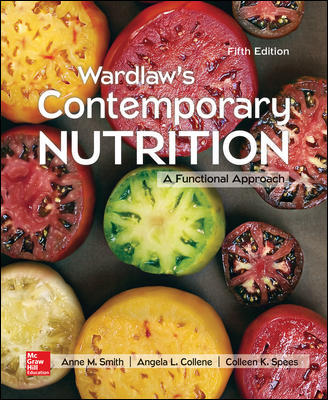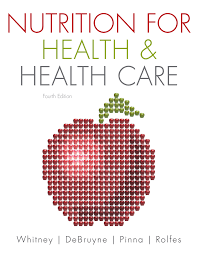Wardlaw’s Contemporary Nutrition A Functional Approach 5th Edition By Anne Smith – Test Bank
Original price was: $55.00.$25.00Current price is: $25.00.
Digital item No Waiting Time Instant Download
ISBN-13: 978-1259706608 ISBN-10: 1259706605
Authors: Anne Smith Angela Collene , Colleen Spees
Publisher : McGraw Hill
Edition: 5th
Description
Wardlaw’s Contemporary Nutrition A Functional Approach 5th Edition By Anne Smith – Test Bank
Chapter 01 Nutrition, Food Choices, and Health Answer Key
Multiple Choice Questions
|
1. |
Recent surveys indicate that the most commonly purchased foods in America are A. pizza, soft drinks, cheesburgers, and French fries. B. milk, ready-to-eat cereal, bottled water, soft drinks, and bread. C. tacos, bagels, bottled water, and ice cream. D. fried chicken, ribs, beer, and donuts. |
|
Blooms Level: 1. Remember |
|
2. |
Which of the following is an essential nutrient?
A. Alcohol B. Carbohydrates C. Phytochemicals D. Zoochemicals |
|
Blooms Level: 2. Understand |
|
3. |
Which of the following is the leading nutrition-related cause of death in the United States?
A. Heart disease B. Cancer C. Diabetes D. Pneumonia |
|
Blooms Level: 1. Remember |
|
4. |
Which of the following nutrients can directly supply energy for human use? A. Lipids B. Fiber C. Vitamins D. Minerals |
|
Blooms Level: 1. Remember |
|
5. |
The main function of carbohydrates is to A. provide energy. B. promote growth and development. C. regulate body processes. D. prevent cancer. |
|
Blooms Level: 1. Remember |
|
6. |
What substances, present in fruits and vegetables, provide significant health benefits such as reducing the risk of cancer? A. Phytochemicals B. Beta blockers C. Deoxidizers D. Free radicals |
|
Blooms Level: 1. Remember |
|
7. |
The essential nutrients A. must be consumed at every meal. B. are required for infants but not adults. C. can be made in the body when they are needed. D. cannot be made by the body and therefore must be consumed to maintain health. |
|
Blooms Level: 1. Remember |
|
8. |
According to the Food and Nutrition Board (FNB) of the National Academy of Sciences, ______ of kilocalories should come from carbohydrates. A. 20% to 35% B. 45% to 65% C. 10% to 35% |
|
Blooms Level: 1. Remember |
|
9. |
According to the Food and Nutrition Board (FNB) of the National Academy of Sciences, ______ of kilocalories should come from protein. A. 20% to 35% B. 45% to 65% C. 10% to 35% |
|
Blooms Level: 1. Remember |
|
10. |
According to the Food and Nutrition Board (FNB) of the National Academy of Sciences, ______ of kilocalories should come from fat. A. 20% to 35% B. 45% to 65% C. 10% to 35% |
|
Blooms Level: 1. Remember |
|
11. |
Fiber belongs to the class of nutrients known as A. carbohydrates. B. protein. C. lipids. D. minerals. |
|
Blooms Level: 2. Understand |
|
12. |
Which of the following is a characteristic of vitamins? A. Provide energy B. Become structural components of the body C. Enable chemical processes in the body D. Made in sufficient quantities by the body |
|
Blooms Level: 1. Remember |
|
13. |
Minerals can A. provide energy. B. be destroyed during cooking. C. be degraded by the body. D. become part of body structures. |
|
Blooms Level: 1. Remember |
|
14. |
Carbohydrates provide ______ kilocalories per gram. A. 4 B. 7 C. 9 D. 0 |
|
Blooms Level: 1. Remember |
|
15. |
Which of the following is characteristic of lipids? A. Supply 4 kilocalories per gram B. Add structural strength to bones and muscles C. Supply a concentrated form of fuel for the body D. Add sweetness to food |
|
Blooms Level: 1. Remember |





Be the first to review “Wardlaw’s Contemporary Nutrition A Functional Approach 5th Edition By Anne Smith – Test Bank”